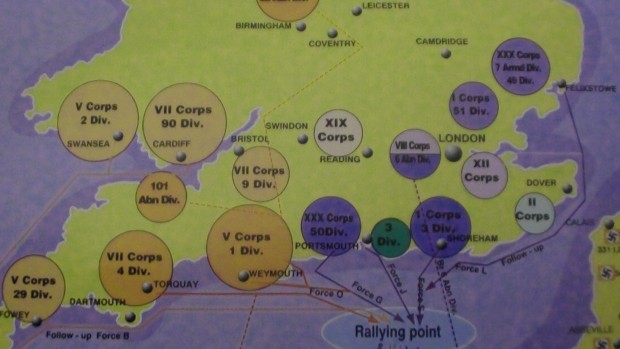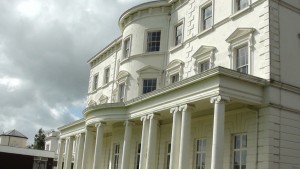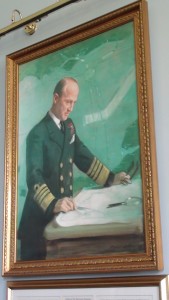D-Day Gathering Operation Neptune
D-Day Gathering, Operation Neptune would enable the largest invasion force to cross the channel for the Normandy Landings.
This massive operation which was the vital precursor to the Landings of the Troops, was in the charge of Admiral Ramsay based at Southwick Fort, where critical information would be shared across the network of signals including code intercepts from Bletchley Park right-up to the day of invasion itself. This was a huge administrative and logistics victory in itself. Here you can see the gathering points that would converge to mount the assault forces which would meet at what was known as Z Buoy and would be the ‘rallying point’ for the massive Naval force, The Naval might was reported in the Evening Standard as consisting of some 4,000 Ships plus thousands of small vessels in support. It is reckoned there were actually some 7,000 in the full Armada. There had been a lock-down and an exclusive zone along the South Coast for some days, in particular. Overlord Gatherings for D-Day (Decision Day)Largest Military Mobilisation (partial Map) focused on Hampshire Coastline
 a critical 10 mile strip of the English Coastline.
a critical 10 mile strip of the English Coastline.
- By the end of May, the troops that will form the invasion force and land in Normandy on D-Day are in camps spread across the South of England. There are Maps at the D-Day Museum as part of the National archives, that show that the ‘Martialing’ area spread as far inland as Horndean on the old London Road and at least as far across as to the Cheesefoot area outside Winchester.
- The Troops were sealed to avoid compromise of the operation to come.Vehicles and equipment had to be water-proofed as the Ships and landing craft would be hitting the beaches from relatively deep water. Mechanical failures would have had catastrophic consequences. Troops are briefed on the overall operation but not on their particular landing points
- From 31 May troops are mobilised for embarkation, the scale requires loading to be spread over 5 days. Those who load early, in sealed ships are stuck for a long and anxious wait that lasts for 4-5 Days.
- 1st June Eisenhower moves his HG in readiness for the nights ahead, a final date is subject to weather and conditions, each further day risks the potential for the assault plan details to be compromised.

Southwick Park House Eisenhower’s HG for Operation Overlord
- Security scares, mere coincidences of Operational code names appear in National Crosswords. Intelligence decrypts from Bletchley continue to provide vital updates.
- Churchill himself was calling Bletchley at the 11th hour to check whether the planned invasion had been discovered by the Germans.
- A French poem is used to alert the Resistannce via BBC Radio as a coded warning that the invasion will take place within a month.
- 2nd June first part of the invasion force is just two X-craft mini submarines to wait off the coast and guide in the 1st Landings at Juno (originally coded Jelly and changed for gravitas at the insistence of Churchill) and Sword beaches
- 3rd June the controversial Group Captain James Stagg predicts the weather, subsequently his methods have been researched and it would appear were somewhat less than scientifically sound. On so much would these forecasts hang and critical decisions to proceed be taken.
- Rommel relies on the bad weather and considers the potential invasion will not proceed and returns to his wife’s birthday in Germany.
- 5th June it isn’t untilnowthatdetailedordersbyJuniorofficersbeginto be opened.
- Eisenhower actually watches the troops embarking at Portsmouth Dockyard in the morning and in the evening visits the 101st Airborne division near Newbury in Berkshire.
- About this period Montgomery was also addressing the British Troops as you ca see from the wonderful pictures we have been granted to use at Droxford in Hampshire. The 70th Overlord Gathering will be again at Droxford this year (2014.)
- The 2nd half of the French poem is broadcast. Whilst German Command realises its significance and raises the alert to their forces, they fail to tell their own Normandy Troops of what they are about to face.
- 11pm approximately Airborne Troops start taking off from their bases across England, they will land by parachute and Glider.
- 6th June
- The early exploits of Howards team and the Horsa Glyders and the taking of Pegasus Bridge at Benouville and Ranville on the 6th and to the East of the Landing Beaches marks the start of D-Day having landed just after midnight. In another 6 hours the first troops start to hit the beaches.
- Command continues throughout from Southwick House, Neptune has done its job and is a success, delivering from Hampshire and all the embarkation points the Naval Assault force needed to commence the Battle for Normandy.


